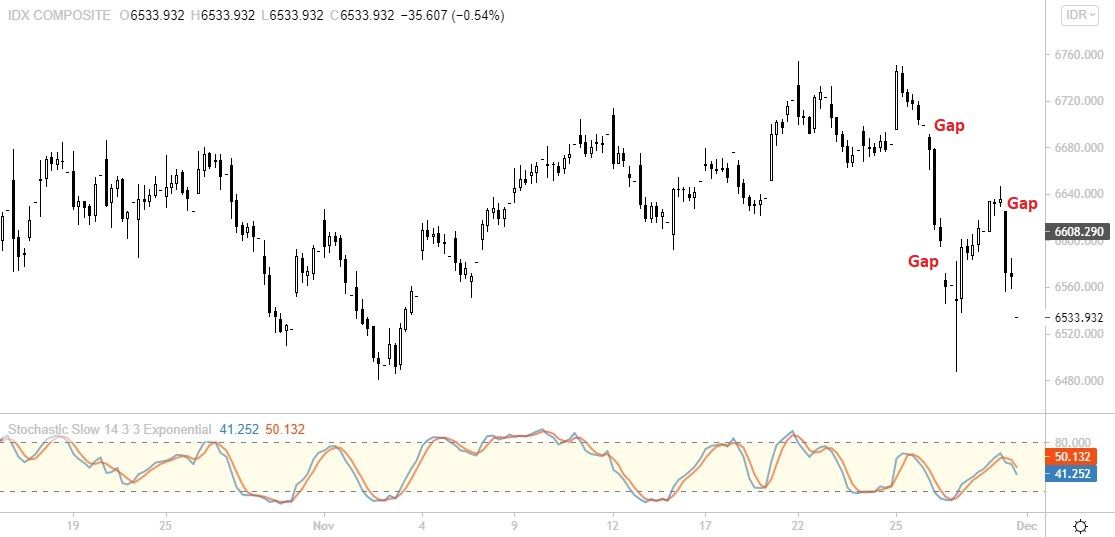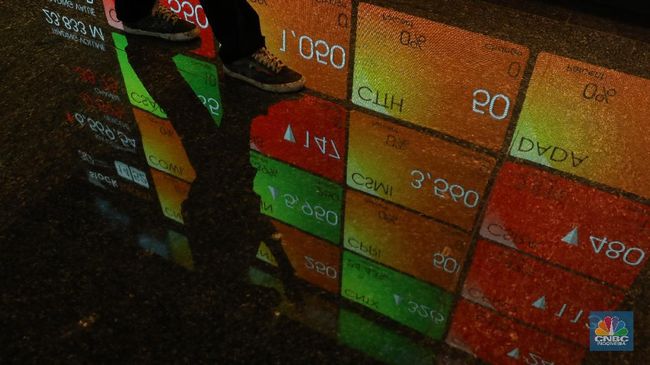Jakarta, CNBC Indonesia – The improving sentiment of global market players made the Composite Stock Price Index (JCI) rose to 0.6% in early trading on Tuesday. But everything changed in a short time, the JCI reversed down more than 1.1% to 6,533,932. On Wednesday (1/12) trading, the JCI was at risk of falling further, because there was bad news for global stock markets.
At the beginning of trading, the JCI was able to strengthen after the statement by the President of the United States (US), Joe Biden, saying that there was no need to do this lockdown akibat Omicron.
“If people have been vaccinated and are wearing masks, there is no need to do this anymore lockdown. Apart from that there will be no travel restrictions,” Biden said at a press conference on Monday CNBC International.
Biden’s statement made the sentiment of market participants improve, the stock market turned green.
However, that all changed immediately after Moderna CEO Stephane Bancel told the Financial Times that he expected the current vaccine to be less effective against Omicron.
Last Monday, Bancel also said it would take several months to develop a new vaccine.
Now another bad news for global stock markets comes from the possibility that the US central bank (The Fed) will accelerate tapering or a reduction in the value of the asset purchase program (quantitative easing/ QE).
“Right now the economy is very strong and inflation is also very high, so in my view it would be appropriate to consider wrapping up the tapering sooner, maybe a few months early,” Fed chairman Jerome Powell said before the US Senate, as proclaimed CNBC International, Tuesday (30/11).
Acceleration tapering be a surprise to the market that risks causing turmoil. Moreover, when tapering accelerates, there is a chance that the Fed will also raise interest rates earlier. European and US stock markets (Wall Street), which fell due to Omicron’s fall, responded to Powell’s statement. The slump is certainly at risk of spreading to Asian markets today.
“I expect the Fed to discuss accelerating tapering at its December meeting,” Powell added.
Technically, the effects of the Doji and Shooting star duet patterns were immediately visible in trading on Friday (26/11), JCI fell by more than 2%, and continued again last Tuesday. The Doji pattern was formed at the beginning of Monday (22/11) which gave a neutral signal. This means that market participants are still hesitant to determine the direction, whether to continue up or go back down.
Then on Thursday (25/11), JCI, which failed to maintain a sharp strengthening, formed a Shooting Star pattern. This pattern is a signal of a reversal or reversal of the direction of the price of an asset.
|
Graph: Daily JCI Foto: Refinitiv- – |
Earlier this week, the JCI also fell again below 6,500 to touch the 50-day moving average (50/MA 50), before finally turning up. The 50 MA at 6,500 is the closest support that will stop the JCI from falling. However, if it is penetrated, the JCI is at risk of falling to 6,470.
The next support is around 6,430.
The pressure for JCI is still quite large if you look at the stochastic indicator on the daily and 1 hour charts which is moving down but has not yet reached the oversold area (oversold).
 Graph: JCI 1 Hour Graph: JCI 1 HourFoto: Refinitiv- – |
Stochastic is a leading indicator, or an indicator that initiates price movements. When Stochastic reaches the overbought (above 80) or oversold (below 20) territory, the price of an instrument has the opportunity to reverse direction.
It means when you haven’t reached the area oversold, there is no JCI trigger for rebound.
However, as long as it stays above 6,500, the JCI has a chance to strengthen to 6,600. A break above that area will open the door to 6,630 and close the gap that occurred last Tuesday.
CNBC INDONESIA RESEARCH TEAM
(pap / pap)
– .

/cloudfront-eu-central-1.images.arcpublishing.com/prisa/SF77NEVDYRF5FHGH3AQYKCMGXM.Jpg)
